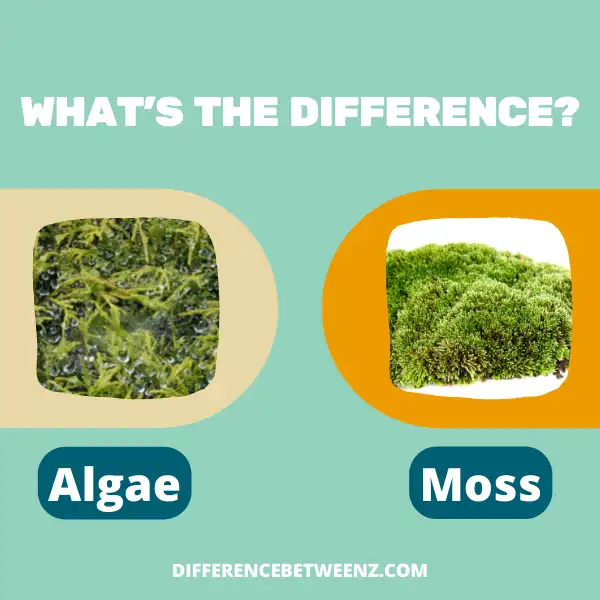Both algae and moss are primitive plants that differ in their physical appearance and the way they grow. Algae generally have a slimy or gelatinous texture, while mosses have a more solid, feathery texture. Algae can grow as single cells or in colonies of many cells, while mosses reproduce through spores. Algae can photosynthesize their own food, while mosses absorb nutrients from the soil. Algae typically grow in water, while mosses grow on land. In terms of benefits to humans, algae can be used to produce biofuels and other products, while mosses have been used for centuries in traditional medicine.
What is Algae?
- Algae are a diverse group of aquatic organisms that have the ability to photosynthesize. They are found in every type of water environment, from fresh to salt water, and their colors can range from bright green to red or brown. While some algae are microscopic, others can grow to be quite large, reaching up to 50 feet in length.
- Algae play an important role in the food chain, providing a source of food for fish, invertebrates, and other aquatic animals. They also help to oxygenate the water and remove carbon dioxide and other pollutants. In some cases, however, algae can become overgrown and cause problems for the ecosystem.
- When this happens, it is often referred to as an algae bloom. Algae blooms can reduce the amount of oxygen in the water, leading to the death of fish and other aquatic life. They can also block out sunlight and affect the growth of plants. Bloom-forming algae are often considered nuisance species, as they can cause extensive damage to natural habitats.
What is Moss?
- Moss is a small, flowerless plant that typically grows in dense, green clumps or mats. Mosses are simple plants that lack vascular tissue, which means they cannot grow taller than a few inches. However, they are very hardy and can thrive in a variety of habitats, including shady forests, rocky cliffs, and even the rooftops of buildings.
- Although mosses are often associated with damp and gloomy places, they are actually capable of surviving in extremely dry conditions. In fact, many types of mosses are commonly used as drought-tolerant ground cover in gardens. Mosses reproduce via spores, which are released from special structures on the plant known as sporophytes.
- When these spores land in a suitable environment, they germinate and grow into new moss plants. Mosses are an important part of many ecosystems and provide food and shelter for a variety of animals, including insects, amphibians, and reptiles. They also help to protect the soil from erosion and can play an important role in water filtration.
Difference between Algae and Moss
Algae and moss are both types of plant life, but they have several key differences.
- For one, algae are often much larger than moss, with some species growing to over 30 feet in length.
- Algae also generally have a longer lifespan than moss, living for years or even decades.
- Additionally, algae are capable of photosynthesis, while mosses are not.
- Mosses do not have true roots, leaves, or stems, instead relying on rhizoids to anchor them to surfaces.
- Algae, on the other hand, have all of these features.
Finally, mosses reproduce via spores, while algae reproduce through a process called vegetative reproduction. Though they may appear similar at first glance, algae and mosses are actually quite different types of plant life.
Conclusion
Algae and moss are both plants, but there is a big difference between the two. Algae can be found in salt water or fresh water, while moss grows on trees or rocks. Algae has cells that are arranged in strands, while moss has cells that are arranged in clusters. Algae can produce its own food through photosynthesis, while moss cannot. Moss needs to attach itself to something else to get its nutrients.


